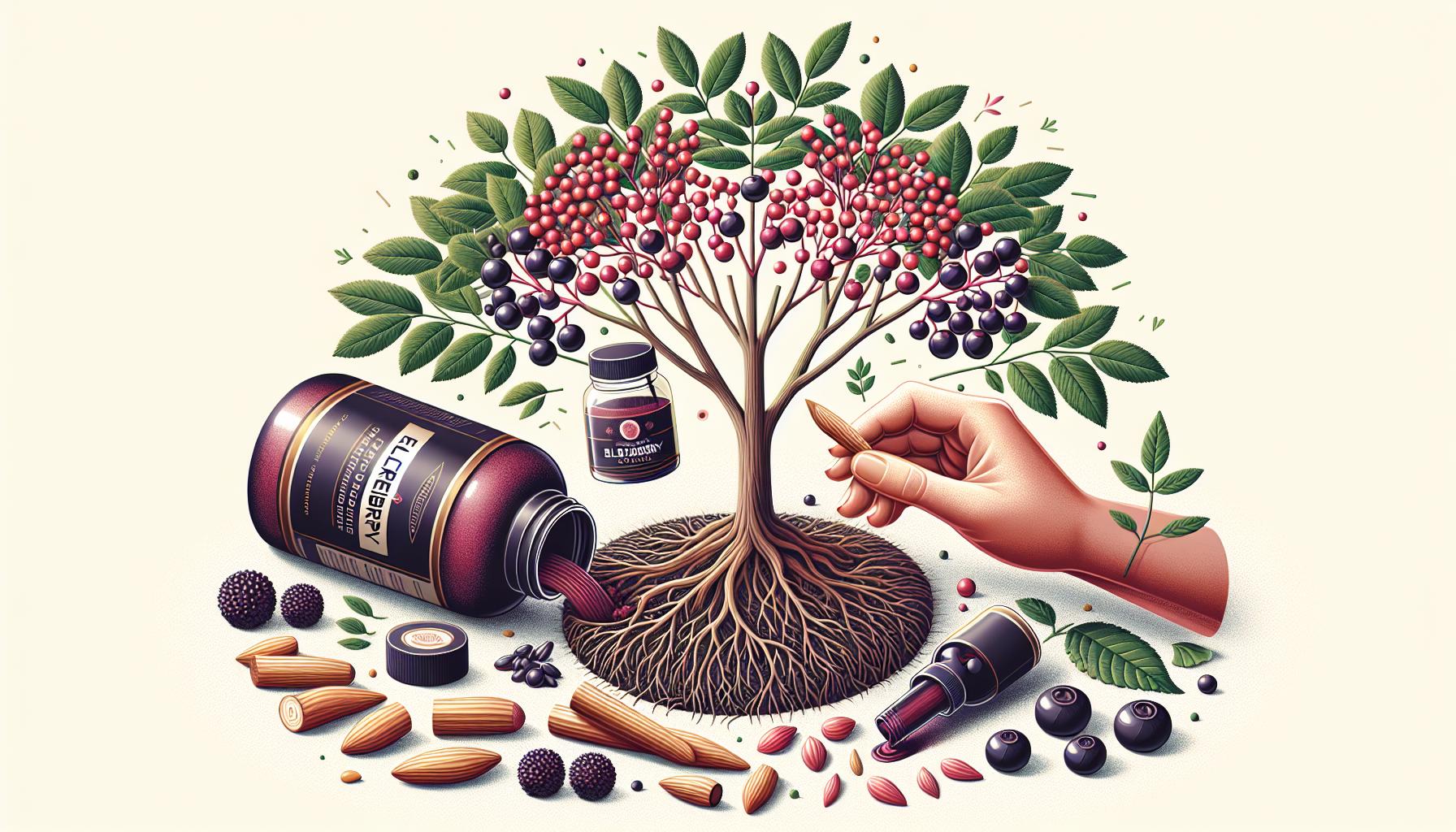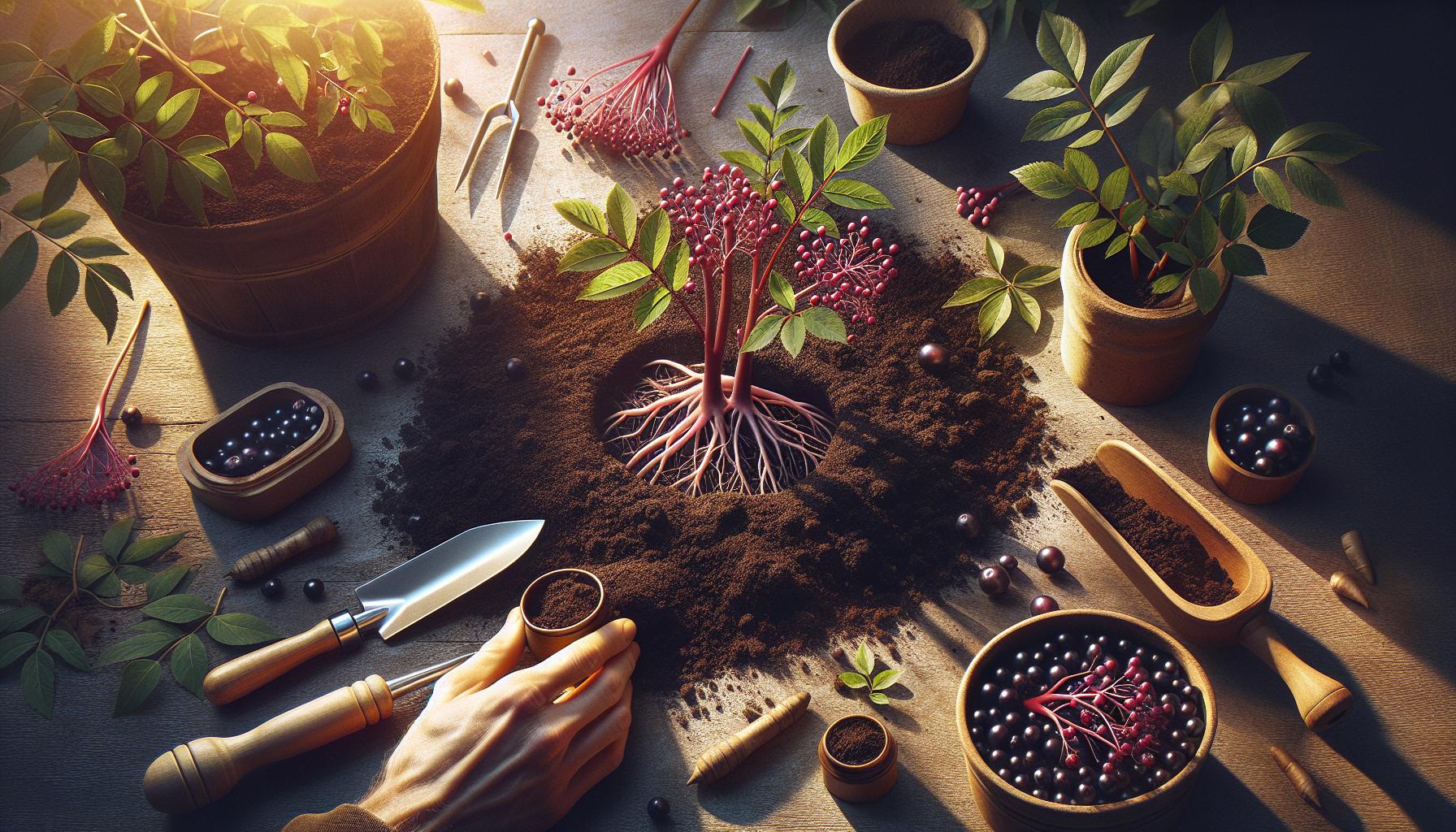
Can you grow elderberry from a branch?
Elderberry is one of the easiest plants to start from cuttings out there. So easy in fact that buying a rooted plant is hardly worth the hassle and higher cost. Cuttings want to live and will grow roots quickly!
Elderberries: A Garden Essential
How long does it take for elderberry cuttings to root? It’s a question that has puzzled many garden enthusiasts and budding horticulturists. Well, to put it simply, elderberry cuttings typically take about four to six weeks to put out roots. Isn’t that surprisingly speedy? Sure, it is, but, what follows this initial rooting phase is crucial for the growth of your beautiful elderberry plants. What are these, you ask? Let’s dive into the elderberry world to learn more about this fascinating plant and its idiosyncrasies.
The Initial Phase: When Elderberry Cuttings Take Root
The initial phase of rooting is quite an intriguing one. Once you plant an elderberry cutting, which could be a short or long cutting depending on your preference, it will begin to sprout roots. This process, as we’ve mentioned, typically takes about a month to a month and a half.
A Metaphor for Metamorphosis
Thinking of rooting elderberry cuttings is a bit like imagining an ugly duckling blossoming into a swan – it takes time, patience, and lots of care, but the end result is exceedingly rewarding.
Post-Rooting: Journey of Elderberry Cuttings
Following the initial rooting phase, elderberry cuttings embark on an exhilarating journey. Once roots have appeared, the cuttings start to push out new growth. It might not be a fast and furious affair, but seeing the elderberry cuttings transform into a full-fledged elderberry bush is truly a spectacle.
The Charming Transformation
This process of elderberries thrusting out new growth brings to mind the slow and subtle shift of seasons – it’s small and gradual, but the impact it makes on the overall landscape is substantial.
The Growth of Elderberries: From Cuttings to Bush
After rooting, when the new growth starts, it can take about two years for the cuttings to grow into a full elderberry bush. The bush can reach up to six feet tall. These stunning plants bloom in the summer, bearing beautiful cream-colored flowers that lend an ethereal charm to your perfect garden space.
Picturing the Perfect Elderberry Bush
Visualizing an elderberry bush in full bloom is like picturing an artist’s diligently painted canvas, teeming with life and bursting with color. The progress from cuttings to bush is a marvel of nature’s artistry.
In a Nutshell: Elderberry Cuttings’ Path to Success
So, now you’ve got a fair idea about how long it takes for elderberry cuttings to root and then grow into a full-blown bush. It’s a journey that takes time, patience, and care, but one that is certainly worth it. The resulting elderberry bush, with its stunning summer blooms, more than makes up for the waiting period!
Conclusion
Understanding the rooting and growth process of elderberry cuttings can be an exciting journey. Though it requires patience, the spectacle of watching the transformation from a tiny cutting to a magnificent bush is simply astounding. More power to your green thumb, and here’s to many happy elderberry plants brightening up your garden!
Frequently Asked Questions
1. How do I take care of my elderberry cuttings?
– Elderberry cuttings flourish when they are kept in moist soil, under a shade. A liquid fertilizer can be used to ensure their healthy growth.
2. When is the best time to plant elderberry cuttings?
– It is ideal to plant elderberry cuttings in spring. However, they can also be planted in early fall.
3. Can elderberry cuttings be grown in a pot?
– Absolutely. It’s possible to start elderberry cuttings in a pot before transferring them to a larger outdoor space.
4. Can I eat fresh elderberries?
- Raw elderberries are generally considered toxic. However, cooked elderberries are safe to consume and offer several health benefits.
5. Are elderberries easy to grow?
– Yes, elderberries are known to be a highly adaptable plant and are comparatively easy to grow. They are resistant to many common diseases and pests.


